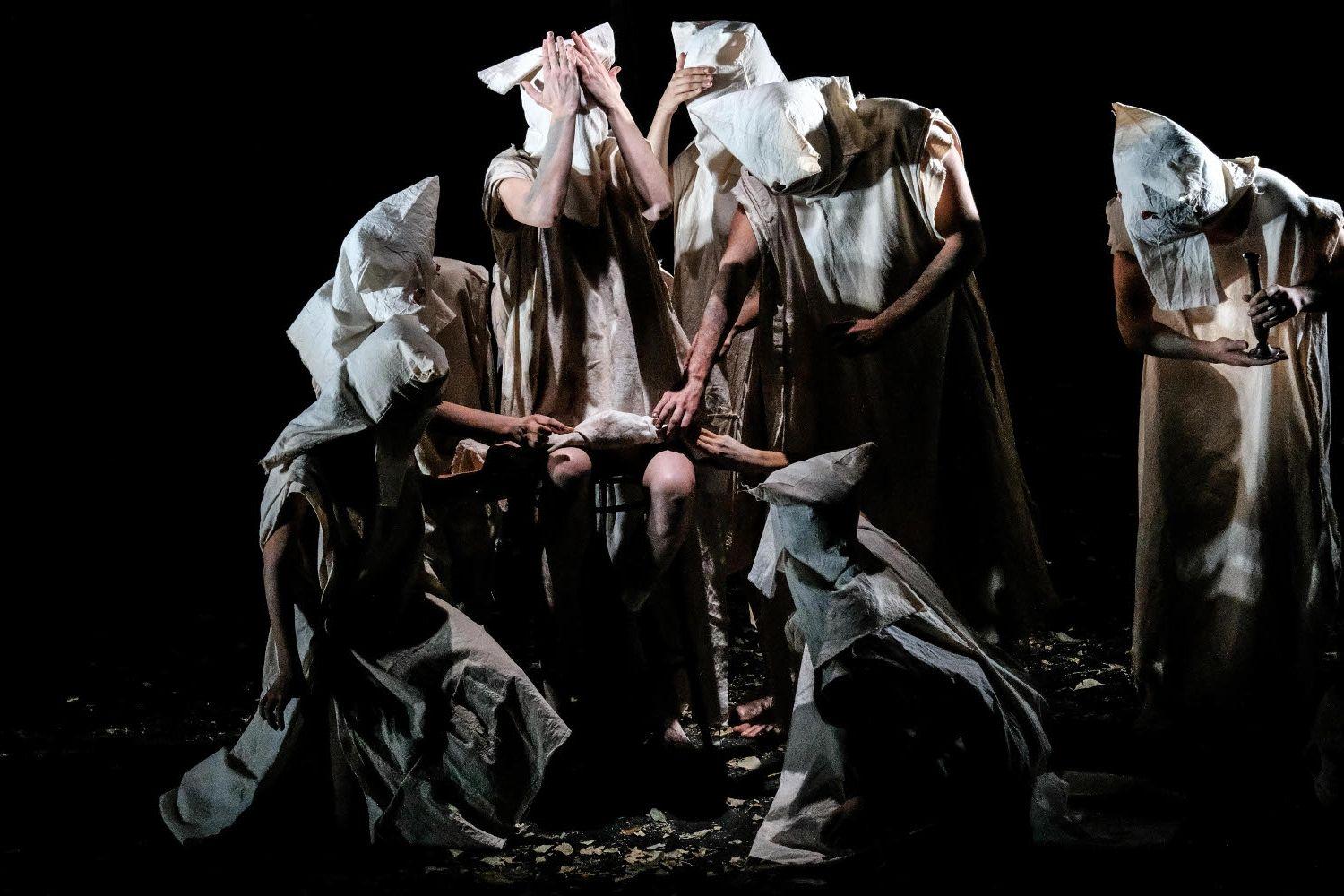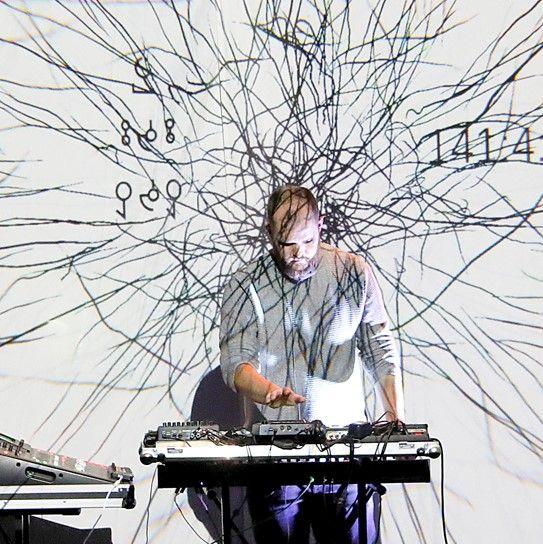New Flesh
completedFellowship

SummaryA guided, interactive VR performance which explores transgression, sensationalism and spectacle through the subject matter of sexual cannibalism. This topic is especially suited for performative VR application because it reformulates fundamental problems of the medium itself: the experience of being physically absent and present simultaneously, the relationship of a technologized world to the "flesh" we inhabit this world with, and the desire for encounter and singular experience that is the basis of one-to-one performance and of the arts' hunger for transgression. It is a lucid challenge for our consciousness, comparable to the first cinematic experiments - and a challenge for theatre, too.
The human being is not generally thought of as a staple food source.
Observing the anatomy and skeleton, one can see that the animal is neither built nor bred for its meat, and as such will not provide nearly as much flesh as a pig or cow.
The large central pelvis and broad shoulder blades also interfere with achieving perfect cuts.
There are advantages to this however, especially due to the fact that the typical specimen will weigh between 100-200 pounds, easily manipulated by one person with sufficient leverage. -- Bob Arson, 'Butchering the Human Carcass for Human Consumption'
Happiness is the proof of the pudding. -- Oswald de Andrade, 'Anthropophagite Manifesto'
Points of Departure
In March 2001, 39yo German IT professional FRANKY and 43yo German engineer CATOR made an appointment on the internet. After meeting at Kassel main station for the first time in “reality” after their extensive online communication, FRANKY drove the two men to his house, where he cut off CATOR’s penis - which proved too chewy for the both of them to eat -, proceeded to kill him with a stab to the throat and then stored the pieces of meat from CATOR’s cut-up body in the freezer. Both had previously agreed to this, for while FRANKY longed to fully internalize another human being by eating it, CATOR wished to be fully disintegrated and disappear. The two men recorded parts of their meeting, wherein they were constantly forced to synchronize their quite different imaginations of the encounter with the reality of their shared physical and social situation.
15 years later, Taiwanese electronics producer HTC cooperated with US company Valve for launching a virtual reality headset they had christened “Vive”. Together with similar products, it marked the beginning of a slow mainstreaming of VR applications - a technology long envisioned with a moniker first coined by French playwright Antonin Artaud, the proponent of a “theatre of cruelty”. The “Vive” headset enabled its users to move in a small space within a computer-generated surrounding and interact with it. VR experiences proved to be highly immersive - and for many people at first physically quite disorienting, because they entailed being present in two realities at the same time. The headset was originally meant to be called “reVive” - but the name was changed before it hit the market; the notion of a new wondrous device transcending death or mortality thus obscured.
Subject Matter: Interviews, Autonarrations, Artistic Production
“Virtually incomprehensible - but he was happy, sitting there in his own blood.” In an interview, FRANKY thus comments on the sight of castrated CASTOR sitting in his bath tub. The desire for understanding, imaginations of fulfilment and redemption and their conflict with reality are recurring themes of the Rotenburg cannibal case. “Whatever you imagine, in reality it is basically always different,” says FRANKY later in the same interview, formulating a core experience of artistic work - only to dismiss it at once, chastened by his own experience: “Why should I do something, knowing it will never be like I imagined?”
Interviews and autonarrations by FRANKY form part of this project’s material as well as protocols of chat conversations by the two involved. Research also covers cases of other confirmed sexual cannibals (Jeffrey Dahmer, Issei Sagawa, Arthur Shawcross, Albert Fish…) as well as an extensive collection of images, videos and writings by people from the internet community of cannibalism fetishists - i.e. the artistic production of the scene itself. Here, not the shock value - the gore - is of interest, but rather the genre’s recurrent figurations and formal rules. What are the conventions for depicting the not only unconventional, but outright taboo? An additional testament to the fundamental discrepancy between imagination and reality are documents of the thousands-of-years-long history of insinuations and mise-en-scènes of cannibalistic desire, which far outweigh “real” occurrences: From Saturn’s cruelty and St. Erasmus’ suffering, collective colonialist projections on the “other” and the monistic ecstasy of Kleist’s Penthesilea to Hannibal Lecter’s unsettling pop appeal. These may also hint at the function of said discrepancy.
Why Though?
The question remains: Why imagine something, knowing I will never fully understand it?
Working with “cases” that are in one way or the other “radical” or “extreme” is always in danger of giving in to sensationalism in representation and deprecation, belittling or denial in reception. Not surprisingly, the cannibalism case of 2001 has already undergone wholesale journalistic and artistic processing - not least, it inspired numerous films and theatre plays. Its spectacular value has been cannibalised for good. Unlike real flesh though, memories and fantasies are not destroyed through consumption. Today, rather will they be externalized digitally and reproduced forever.
The subject matter of sexual cannibalism is especially suited for performative VR application because it reformulates fundamental problems of the medium itself: the experience of being physically absent and present simultaneously, the relationship of a technologized world (both men came from technical professions) to the “flesh” we inhabit this world with, not least the desire for encounter and singular experience that is not only the basis of one-to-one performance and of the arts’ hunger for transgression, but for so many of today’s practices and services. VR as a medium - and XR/MR as its follow-up - performs such transgression by first and foremost creating the experience of being alive and present with one body in two distinct spaces at once - the “virtual” and the “real”. It is a lucid challenge for our consciousness, comparable to the first cinematic experiments - and a challenge for theatre, too.
Research Questions
The fellowship time will be used for research and technical try-outs regarding the setting, 3D visualization und interaction of the planned piece. Self-education on Unity 3D's shader graph, re-creating the physical performance space in VR & avatar creation and live control will also be part of the work. In the unlikely case of a global pandemic interfering with schedules, efforts will be made to boil down plans in a way so as to still achieve a presentable outline of the project involving VR elements.
Equipment/Setup needed
Development will focus on cable connected higher end consumer HMDs, specifically on HTC Vive / Steam VR. Besides a Vive/Vive Pro headset with base stations and controllers, at least two Vive trackers will be part of the setup (more if used for performer body mocap). Wireless microphones for performer(s) and a computer being able to run the VR elements are also necessary.
Space/Time needed
The piece will reproduce a model of the actual physical performance space in VR, so knowledge of it and development time to produce the appropriate design beforehand as well as enough setup time to ensure correct alignment of virtual and real space are necessary.
As of now development aims for a ca. 30 minute 1-on-1 performance alternating between real and virtual space in the course of its narration.




